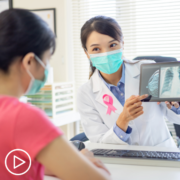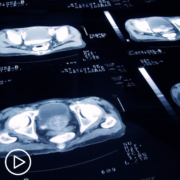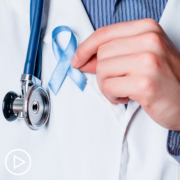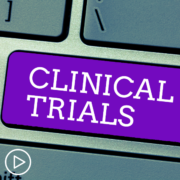Hesitant to Join a Breast Cancer Clinical Trial? What You Should Know.
Hesitant to Join a Breast Cancer Clinical Trial? What You Should Know. from Patient Empowerment Network on Vimeo.
What do breast cancer patients need to know about clinical trials? Breast cancer expert Dr. Adrienne Waks addresses common concerns and misconceptions about trial participation.
Dr. Adrienne Waks is the Associate Director of Clinical Research at Dana-Farber Cancer Institute. To learn more about Dr. Waks click, here.
See More from Breast Cancer Clinical Trials 201
Related Resources:

|

|

|
Transcript:
Katherine:
What would you say to patients who may be hesitant to participate in a trial?
Dr. Waks:
That’s a great question. I think many patients are at first hesitant to participate in a trial, which is natural. You know, there’s already so many overwhelming and scary decisions to be made when it comes to getting a breast cancer diagnosis or any cancer diagnosis that introduce a whole other set of discussions. Instead of variables, it’s found extremely overwhelming and adds another level of what might feel like uncertainty, so I think that’s a completely natural response is to be hesitant and overwhelmed if somebody brings up the clinical trial.
But what I would try to address in terms of patient concerns is number one, I think that patients worry that if they are approached about a clinical trial that means there aren’t other good options available to them which not always, but almost always is actually far from the truth. Usually it’s just because we have a standard, we think it’s pretty good but we’d like to do better than the standard and participating in a clinical trial is how we do that.
So, first I always, of course, assure patients this clinical trial is not like something we’ve never tested before and we know nothing about it, and it’s not because I don’t have other options for you. It’s just because I want to do better than the existing options and often it’s looking at an agent that’s already FDA-approved, but we’re trying to combine it with a different agent or something like that.
So, obviously, number one try to give patients some reassurance about what we already know about the trial agents and also reassure them about the fact that we don’t anticipate the efficacy of their treatment overall would be compromised. Rather we’re trying to improve upon that. So, I think that’s probably the most common concern that I hear from patients, but, of course, as providers it’s our job to understand from that specific patient who’s in front of you what are your particular concerns about clinical trials in general. And are those misconceptions that I can dispel for you, or are they real things that some women on trials do experience in which case we should talk through them and decide if it’s the right fit for you.
It’s almost always true that participating in a clinical trial does come with what I always call a few other hoops to jump through, because when you’re participating in a clinical trial we want to learn from your experience. So, we do want women to complete questionnaires about their side effects or have a second appointment one week later so that we can do an extra side effect check-in or something like that. You know, do an EKG that they wouldn’t otherwise need. So, there can be and often are some additional logistical or scheduling components that come with participation in the trial.
Again, we would want a patient to voice how that might or might not fit into her life and be very up front about what could be expected in terms of additional asks which can be extremely minimal or sometimes more disruptive depending on the trials. So, obviously, we just need to have a conversation about that.
























